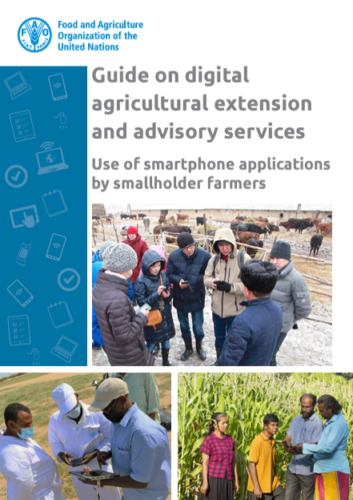Start a dialogue!
Digital agricultural extension and advisory services (AEAS) offer tremendous opportunities to revolutionize how smallholder farmers access critical information and services. These digital tools can enhance accessibility, delivery, transparency, and the overall impact of agricultural guidance, leading to more efficient farming practices and improved livelihoods. However, the potential of digital AEAS is often underutilized, especially among smallholder farmers in rural areas, due to a widening digital divide and low levels of e-literacy and digital skills.
Challenges in Digital Adoption
Smallholder farmers in developing countries face significant barriers to fully harnessing digital AEAS. The digital divide, evident between rural and urban areas, different genders, and social groups, limits access to these valuable resources. Additionally, low levels of digital literacy among smallholder farmers further exacerbate the issue, preventing them from taking advantage of smartphone applications and other digital tools designed to improve agricultural practices.
The Importance of Digital Empowerment
Recognizing digital AEAS’s critical role in empowering smallholder farmers, the Food and Agriculture Organization of the United Nations (FAO) has developed a comprehensive guide to bridge this gap. The guide offers tools designed to enhance smallholder farmers’ digital skills, providing them with the basic knowledge needed to effectively use digital tools, access digital AEAS, engage in e-commerce, and build their capacity in the digital space.
Empowering Smallholder Farmers through Smartphone Applications
Smartphone applications are at the forefront of this digital revolution in agriculture. These apps can provide smallholder farmers with real-time weather updates, pest and disease management advice, market prices, and more. Smallholder farmers can make informed decisions that boost productivity, reduce risks, and increase income by improving their digital literacy and access to these tools.
However, the successful adoption of these applications hinges on targeted efforts to educate and train farmers using digital technologies. This FAO guide is a crucial resource in these efforts, offering step-by-step instructions and practical advice to ensure that the benefits of digital AEAS are equitably distributed.
Conclusion
Digital agricultural extension and advisory services are crucial to transforming agriculture for smallholder farmers. By addressing the digital divide and improving digital literacy, particularly through the use of smartphone applications, smallholder farmers can unlock new opportunities for growth and sustainability in their agricultural practices. The FAO’s guide is essential in this journey, equipping farmers with the knowledge and skills they need to thrive in the digital age.
Access the Full Guide
For more detailed information, please visit FAO’s official publication.

